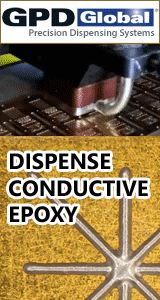Printed Circuit Board Assembly & PCB Design Forum
SMT electronics assembly manufacturing forum.
- SMTnet
- »
- Electronics Forum
- »
- two-sided design guidelines
two-sided design guidelines
![]() Is anyone out there aware of any standard or even a section ...
- Oct 09, 2002
by
Steve Thomas
Is anyone out there aware of any standard or even a section ...
- Oct 09, 2002
by
Steve Thomas
![]()
![]()
![]() Steve, I am not aware of any standards so to speak. But IP...
- Oct 18, 2002
by
RDR
Steve, I am not aware of any standards so to speak. But IP...
- Oct 18, 2002
by
RDR
![]()
![]()
![]() Check out ...
- Oct 21, 2002
by
Stephen
Check out ...
- Oct 21, 2002
by
Stephen
![]()
![]()
![]() There is some pretty useful info in there
...
- Oct 22, 2002
by
RDR
There is some pretty useful info in there
...
- Oct 22, 2002
by
RDR
![]()
![]()
![]() I want to know how many PTH or DIP components is the critica...
- Oct 23, 2002
by
pizz
I want to know how many PTH or DIP components is the critica...
- Oct 23, 2002
by
pizz
![]()
![]()
![]() It sounds like you already know the answer! How much does i...
- Oct 23, 2002
by
RDR
It sounds like you already know the answer! How much does i...
- Oct 23, 2002
by
RDR
![]()
![]()
![]() Thanks, Russ, and Stephen. Valuble comments all. I also dow...
- Oct 23, 2002
by
Steve Thomas
Thanks, Russ, and Stephen. Valuble comments all. I also dow...
- Oct 23, 2002
by
Steve Thomas
![]()
![]()
![]() thank ur kind help.
the above two processes,which is more ...
- Oct 24, 2002
by
pizz
thank ur kind help.
the above two processes,which is more ...
- Oct 24, 2002
by
pizz
![]()
- SMTnet
- »
- Electronics Forum
- »
- two-sided design guidelines






